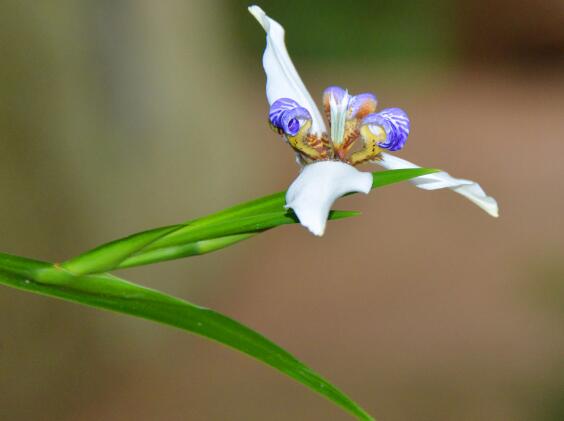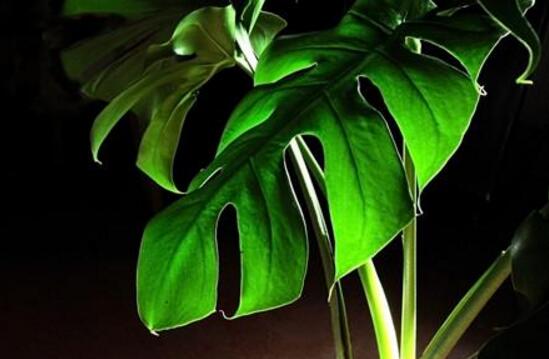Don't forget what to do when I grow bugs, don't forget my pest control / 2 insect pests 3 diseases
In the process of breeding forget-me-not, it is easy to have diseases and insect pests if it is not properly maintained. Forget-me-not is a highly ornamental plant, and it still has a great impact on it if there are diseases and insect pests. What about forget-me-not worms? what do you need to do to control diseases and insect pests? Next, the editor will take you to learn about it.
First, forget-me-not what to do with worms / chemical control

With regard to the question of what to do with forget-me-not worms, first of all, we need to find out the cause. Only by knowing the reason can we deal with it pertinently. The most direct way is to choose chemicals for prevention and control. Of course, different diseases and insect pests use different agents. This point is described in detail below, and we will continue to look at it.
II. Forget-me-not pest control
1. Shell pest
In the prevention and control of forget-me-not diseases and insect pests, the shell insect is a relatively common pest, which mainly absorbs the sap of plants, resulting in the loss of nutrients in leaves, yellowing and, in serious cases, the phenomenon of plant death.
Control method: when this pest occurs, we can choose to use 1000 times of omethoate to spray the pest, which is usually sprayed once every 7-10 days, and the pest can be completely eliminated after 2-3 times.
two。 Mole cricket pest
This kind of pest has certain harm to many plants, and forget-me-not is one of them. Mainly harm its seedlings, will gradually bite the seedlings, resulting in seedling growth restriction, serious will appear the phenomenon of atrophy and death.
Prevention and control methods: when this kind of pest occurs, it must be controlled at the initial stage, if it takes a long time, it may not be saved. In general, we can use 90% crystal trichlorfon 800 times solution for root irrigation treatment.
3. Grey mold disease
Botrytis cinerea is a fungal disease, the general high incidence period is relatively hot in summer, so we must pay special attention to this time, this disease mainly harms the leaves of forget-me-not, when the disease occurs, there will be some watery spots on the leaves, the color is grayish white, with the development of time will gradually rot the plant, it is best to lead to the phenomenon of decay.
Prevention and control methods: Botrytis cinerea is a disease that is difficult to control. Generally, prevention and treatment is best carried out at the initial stage of the disease. If it drags on for a long time, there is no cure. In the initial control, we can use 50% isobarbazide or 20% pyrimidine with water to spray the plant.
4. Powdered powder disease
This disease mainly harms the leaves of forget-me-not, like its name, some white powder-like mildew layer will appear on the leaves, and will gradually spread, and finally lead to the phenomenon of premature senility.
Control method: to control this disease, we can use 1000 times solution of 15% trimethoprim. Generally, the plant is sprayed once every 3-6 days, and the disease can be eliminated after 3-5 times.
5. Virus disease
This is a parasitic disease, the main harm to forget-me-not leaves, after the disease, the leaves will gradually fade green, will make the color become mottled, after a long time, the leaves will gradually wither.
Prevention and treatment: when this disease is found, it must be dealt with as soon as possible. We can use 32% nucleoside bromoguanidine for prevention and control, usually sprayed once every 7-10 days, and the disease can be basically eliminated after 1-2 times.
Talking about the breeding methods of forget-me-not and the prevention and control skills of diseases and insect pests
Don't forget that my flower, as its name gives people a romantic impression, is not only beautiful but also romantic, and is very popular with young women in daily life. Here are the breeding methods and pest control techniques of forget-me-not. Please collect them quickly.
I. Propagation methods
Forget-me-not reproduction is mainly in two forms: seeding reproduction and tissue culture.
1. Sowing and reproduction
It can be carried out all year round as long as the temperature is suitable. As the optimum temperature for seed germination is 15-20 ℃, annual cultivation in cool areas in summer can be sown in early spring, and annual cultivation in hot areas in summer is more than that in autumn. Because the germination rate of its seed with shell is low, it needs to be rubbed before sowing and then sown after threshing, which can improve the germination rate. When sowing, 4 parts of rotten leaf soil, 4 parts of garden soil and 2 parts of sandy soil should be mixed well. Because the seeds are light-resistant, it is appropriate to cover the soil after sowing, so that the seeds can not be seen by covering the soil. Under the suitable temperature of 15-20 ℃ and sufficient humidity, it can germinate after 10-15 days. Attention should be paid to ventilation after budding, and it can be planted when the seedlings grow more than 5 true leaves.
two。 Tissue culture
The explants used in forget-me-not tissue culture are young inflorescences, aseptic buds and so on. The medium for bud induction was MS+2.0 mg / L BA+0.2 mg / L NAA, and the rooting medium was 1 MS+ 2 mg / L NAA. The suitable substrate for transplanting test-tube plantlets is peat soil ∶ perlite = 1 ∶ 1. When the test-tube plantlets have 4-6 leaves, they should be planted.
2. Cultivation techniques
1. Cultivation substrate
Forget-me-not has a low demand for soil, and the cultivation of loose and breathable sandy loam is the best. The amount of base fertilizer accounts for 70% of the total amount of fertilizer. Base fertilizer is usually compound fertilizer and mature organic fertilizer. During cultivation, the bed is leveled and made with a height of about 20 cm. Seedling planting should not be too deep, the planting depth should be flat between the rhizome and the soil surface, and should be watered in time after planting.
two。 Fertilizer and water management
When the seedlings survived and began to grow, topdressing was carried out with irrigation every 10 days, and 200 mg/L of nitrogen fertilizer and 100 mg/L of potassium fertilizer were added to the water to fertilize. The soil needs to be kept moist during the seedling period, and weeding is often needed to promote the healthy development of the seedling root system. About 2 months after the seedlings were planted, they began to produce flower branches. When entering the flowering period, water and fertilizer should be sufficient, otherwise the flower branches are short and the flowers are not luxuriant. 200 mg/L of nitrogen and potassium mixture can be added to irrigation water and fertilized once every 10 days or so. It can improve the yield and quality of forget-me-not cut flowers.
3. Temperature management
Do not forget me like a cool environment, afraid of high temperature. The best temperature in cultivation is 12-20 ℃.
4. Light-regulated
Forget-me-not likes to grow in the sun. If the environment is shaded, it will lead to less scape. Therefore, to ensure all-day sunshine, the growth is better. When there is not enough light, you need to replenish the light.
5. Flower branch fixation, shaping and pruning
To produce high-quality forget-me-not cut flowers, it is usually necessary to draw a net to fix the flower branches. The specific method is to pull a grid 20cm to 30cm from the ground before bolting, wait for the plant to grow scape, and then cover the second net at a height of 45cm from the ground. As the flower branches grow, draw the flower branches into the grid and keep the scape upright.
Forget-me-not during the growth period, the flower branches should be treated differently according to the size of the seedlings. For the plants that have grown larger and the leaves between the plants are basically closed, each plant retains 4-5 flower branches for its growth and flowering; for the smaller seedlings, it can remove the flowering branches, inhibit its temporary non-flowering, make the plants fully grow, and lay the foundation for the production of high-quality cut flowers. wait for the plant to grow fully before it enters the flowering period. During this period, the newly extracted thin flower branches should be removed regularly to concentrate nutrients for the supply of flowering branches, improve the ventilation and light transmission conditions inside the plant, reduce the number of blind flowers in the middle and lower parts of the plant, and improve the quality of a single flower branch. After the amount of cut flowers is more than 50%, the next flowering branches should be cultivated. The practice is to retain a small number of new flower branches during this period, and after the last crop of flowers are all cut, the retained flower branches have grown to a certain height, so as to effectively shorten the time between the two crops of flowers, so that forget-me-not can continuously blossom and supply the market.
6. Pest control
Forget-me-not diseases include Botrytis cinerea, powdery mildew, virus and so on. Botrytis cinerea can be controlled by 800 ~ 1000 chlorothalonil and methyl topiramate for 3 times. Powdery mildew can be controlled by spraying powdery mildew, and virus diseases can be prevented and treated by timely removal of diseased plants and spraying insecticides to prevent insect-borne diseases.
Shell insects are the most common pest of tortoise-backed bamboo. In small amounts, they can be cleaned with an old toothbrush and sprayed with 1000 times omethoate EC.
7. Cut Flowers and listing
When the petals on each floret expand to 30%, all the inflorescences show color, and they can be picked and cut. When picking flowers in the morning or evening, cut from the base of the plant, especially in the early stage of cutting, should be cut above a large leaf of the flower branch, which can promote the axillary bud germination of the plant. After harvesting and cutting, the base of the flower branch is immersed in the fresh-keeping solution to keep the flower branch on the market with sufficient water. Don't forget that cut flowers can be stored for 2-3 weeks at about 2 ℃.
Forget-me-not is a common cut flower in the flower market, and it sells very well. It can be planted on a large scale and potted. People who like flowers and plants can try to cultivate them themselves.
Forget-me-not disease and insect pest control
Forget-me-not root rot
Disease symptoms
In fact, many flower lovers grow flowers to appreciate the parts of the ground. As for what the underground roots look like, it seems to have nothing to do with you, but the growth of the roots is closely related to the stems and leaves of the flowers on the ground. Do not forget that once I was infected with root rot, the roots gradually blackened and rotted, the absorptive capacity decreased, unable to receive nutrients, but also unable to transport nutrients to stems and leaves, resulting in plant wilting and yellowing.
Prevention and cure method
If the root rot is not serious, remove the plant, cut off the rotten part, then soak it in potassium permanganate solution and replant it. Then spray 60% ethyl phosphine aluminum wettable powder 500 times.
Don't forget me, brown spot.
Disease symptoms
The common forget-me-not leaves are not obvious, the small ones are not conspicuous, but the leaves are essential. Forget-me-not brown spot mainly harms the leaves, resulting in brown spots on the leaves, yellowing and falling off, affecting the ornamental value. In serious cases, it will harm the stem, resulting in spots and even rot on the stem.
Prevention and cure method
Strengthen maintenance, watering should not be too much, strengthen ventilation, reduce humidity.
Diseased leaves should be removed in time to avoid further infection.
The initial stage of the disease can be sprayed with 65% Dysen zinc wettable powder 600-800 times and 50% carbendazim wettable powder 600-800 times.
Forget-me-not pest control
Forget-me-not pests are mainly concentrated at the bottom, the common ones are small tigers, mole crickets, grubs and so on, but the harm of mites is the most serious in families. They will directly ingest plant sap and cause damage, but more importantly, they will spread viral diseases. So early detection and early treatment, timely use of fungicides to irrigate, so as not to cause the occurrence of viral diseases.
- Prev

What about the long worm of Iris? control of diseases and insect pests of Iris / 2 insect pests and 3 diseases
Iris is a kind of plant with high ornamental value, and many people will choose to raise one at home, but there may be diseases and insect pests if there are mistakes in the breeding process. What about the Iris worms and how to control the diseases and insect pests of Iris? Next, the editor will take you to learn about it.
- Next

What to do when there are bugs on the back of the tortoise? the pest control of the bamboo on the back of the tortoise is mainly based on drug spraying.
If people are not treated in time after illness, it may cause other diseases, which may seriously endanger our health and even our lives. In fact, this is also the case when planting tortoise back bamboo. If it grows worms or occurs diseases, it should be treated in time.
Related
- Fuxing push coffee new agricultural production and marketing class: lack of small-scale processing plants
- Jujube rice field leisure farm deep ploughing Yilan for five years to create a space for organic food and play
- Nongyu Farm-A trial of organic papaya for brave women with advanced technology
- Four points for attention in the prevention and control of diseases and insect pests of edible fungi
- How to add nutrient solution to Edible Fungi
- Is there any good way to control edible fungus mites?
- Open Inoculation Technology of Edible Fungi
- Is there any clever way to use fertilizer for edible fungus in winter?
- What agents are used to kill the pathogens of edible fungi in the mushroom shed?
- Rapid drying of Edible Fungi

